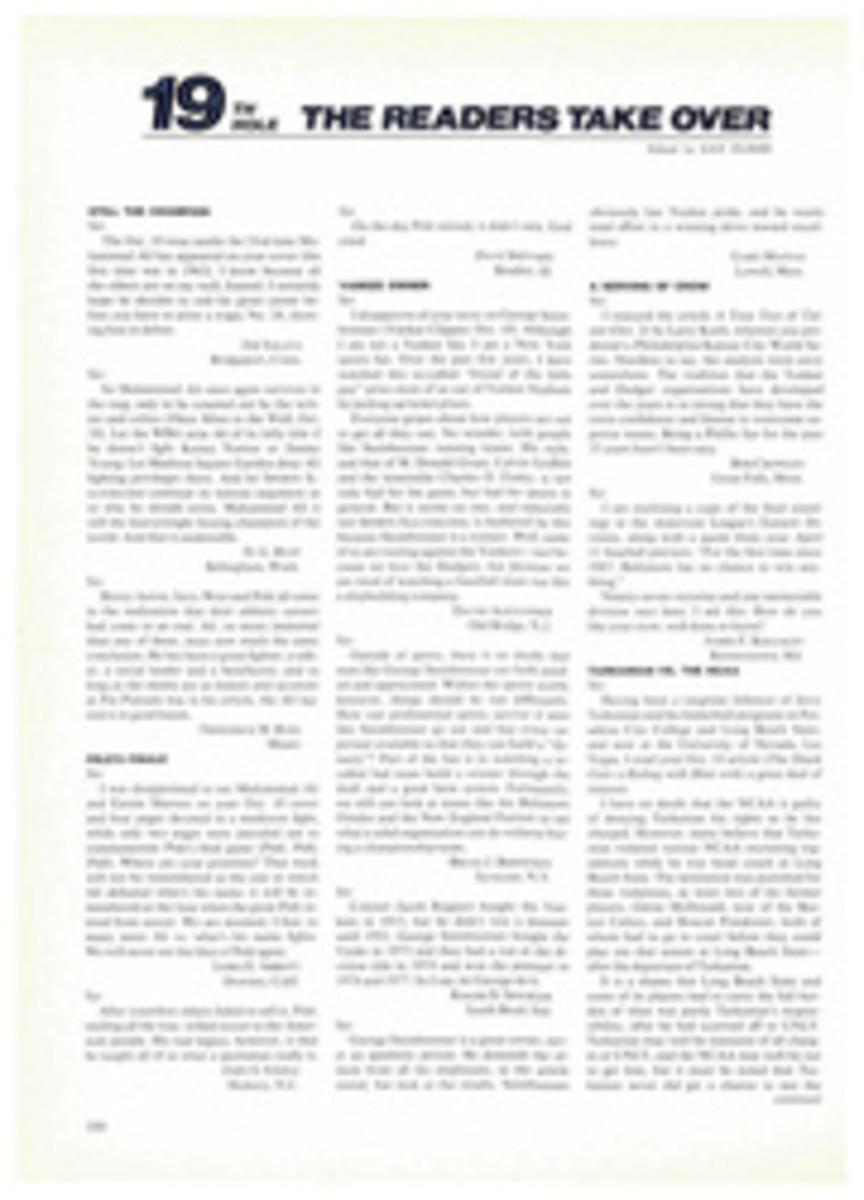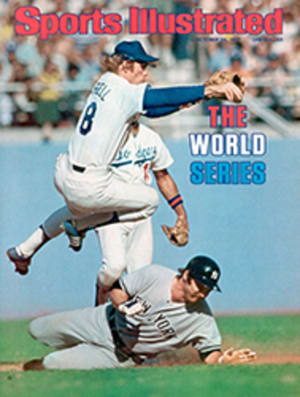
MARY MARSHALL WAS STRIDES AHEAD OF THE TIMES WHEN SHE BEAT A MAN
No sports encyclopedia mentions Mary Marshall, an oversight that in the post-King-Riggs era ranks as an injustice of the first order. A century ago Marshall apparently was the first female to take on a man in a head-to-head—or, more precisely, foot-to-foot—professional sports event and show that women are not necessarily the weaker sex.
In 1876 Marshall, who lived in Chicago, was 26 years old, stood 5'3" and weighed 135 pounds. She had been a professional pedestrian for less than a year. The sport of speed-walking was more than 100 years old but only recently had been gaining in popularity, partially because women found the emphasis on endurance rather than speed suited them. Looking about for a worthy opponent, Marshall issued a challenge to Bertha Von Hillern, a German who was one of the finest woman pedestrians of the day. Von Hillern had competed in Berlin against the clock and recently had defeated an American woman in a race in Peoria, Ill. Von Hillern; though also dimunitive, was more athletic in appearance than Marshall. The Baltimore American described the German as having a "stocky" body with "stalwart ankles" and a face that "is not a handsome one, but is far from being unattractive." Dressed in somber colors, a black derby hat and carrying a whip at her side, Von Hillern presented a formidable figure on the pedestrian oval.
On the last day of January 1876, Marshall and Von Hillern began a six-day competition at Chicago's Second Regiment Armory for a purse of $500. The women had hoped to cover 300 miles during the race, but after Marshall had completed 234 and Von Hillern had walked 231, Bertha quit, complaining of hometown "unfairness on the part of the referee." Von Hillern left the Midwest after issuing a challenge for a rematch anywhere but in Chicago.
The second Marshall-Von Hillern race took place in New York City's Central Park Garden in early November of the same year. This time Marshall's feet started to give out after only 75 miles. "She has changed her shoes twice during the walk," The New York Times reported, "her feet having swelled a great deal." Despite the discomfort, Marshall plodded onward. After five days, she trailed Von Hillern by only 213 miles to 221, even though on one occasion she had been forced to retire for three hours to rest her feet. Her left ankle was swollen, and a blister had developed on her left heel, which caused observers to doubt her ability to finish the race. The limping Marshall somehow managed to complete 281 miles by the end of the sixth day. but Von Hillern, moving relentlessly forward, won with 323½.
Undaunted, Marshall promptly issued a challenge for a series of three 20-mile races to Peter L. Van Ness, a Philadelphia pedestrian who happened to be in New York at the time. The first to win two races would receive $500 in prize money. Van Ness was capable of walking a mile in less than 10 minutes, but The New York Sun warned that he "lacks endurance." However, few thought that he would be unable to walk 20 miles in less time than it took a woman with chronically sore feet.
The scene of their competition was a 22-laps-to-the-mile track of packed earth and sawdust in Central Park Garden. The place was jammed when the first race began at 7:04 p.m. on Nov. 16, 1876. Van Ness, as expected, moved quickly into the lead, although, according to the Times, "neither appeared desirous of making very fast time." After Marshall walked two or three laps, it became evident that she was lame. Nevertheless, she doggedly walked on. At the end of eight miles, Van Ness retired "for refreshment" after having stepped off a succession of near-10-minute miles. Marshall, playing tortoise to Van Ness' hare, managed to cover a mile only once every 14 minutes, but completed 10 miles without a break.
Van Ness, not noticeably alarmed, appeared on the track as Marshall reached the halfway mark and walked his ninth mile in a brisk 9:45. During the next four miles, he cut considerably into his opponent's lead, then left the track for a second rest period. When he started out again, he completed only two more miles before taking a third break. Meanwhile, Marshall steadily plodded on. Van Ness realized too late that he was hopelessly out of the race. At 12:15 Marshall completed the 20 miles, one mile and eight laps in front.
The next evening Van Ness had a more determined attitude, although it became obvious that even at his best he needed more rest than Marshall. "He walked rapidly away from her at the start," the Sun reported, "and made his first six miles in one hour and seven minutes, before she had completed her fifth mile. He continued to increase his lead until the end of the 10th mile, and then he retired from the track much exhausted, two miles and one-quarter ahead."
By continuing her steady pace, Marshall made Van Ness work for everything he got. "There was considerable excitement and early in the evening it was thought that Mary Marshall would be the winner," the Times wrote. "She walked very steadily and seemed to be in good condition, but Van Ness put in a brilliant ten-mile spurt later in the evening." That surge enabled him to beat Marshall and set the stage for the third and deciding race.
Again Van Ness began with a rush, completing 10 miles in one hour 51 minutes. At that point he had a lead of more than two miles, but it quickly evaporated during his ensuing 45-minute rest period. Reappearing on the track, he caught Marshall at the 13-mile point, and for a time it was neck-and-neck. But at the end of the 15th mile, Van Ness again ran out of gas and retired to the sideline. He later resumed the chase and was beginning his 20th mile as Marshall completed hers. The winning time was five hours nine minutes.
Some newspapers sneered at Marshall's victory. "Van Ness on Friday night walked his 20 miles in nearly two hours less than that occupied by Miss Marshall on Saturday night," The Evening Post remarked. Other papers were happy for the victorious woman and described her as "plucky."
Marshall apparently called it quits after her glorious victory. Both Van Ness-and Von Hillern continued racing competitively, their names turning up frequently in newspaper accounts after 1876, but no mention is made of the little woman who beat a man at his own game. It may have been a case of deciding to retire while at the pinnacle of success. Or it could have been just sore feet.

